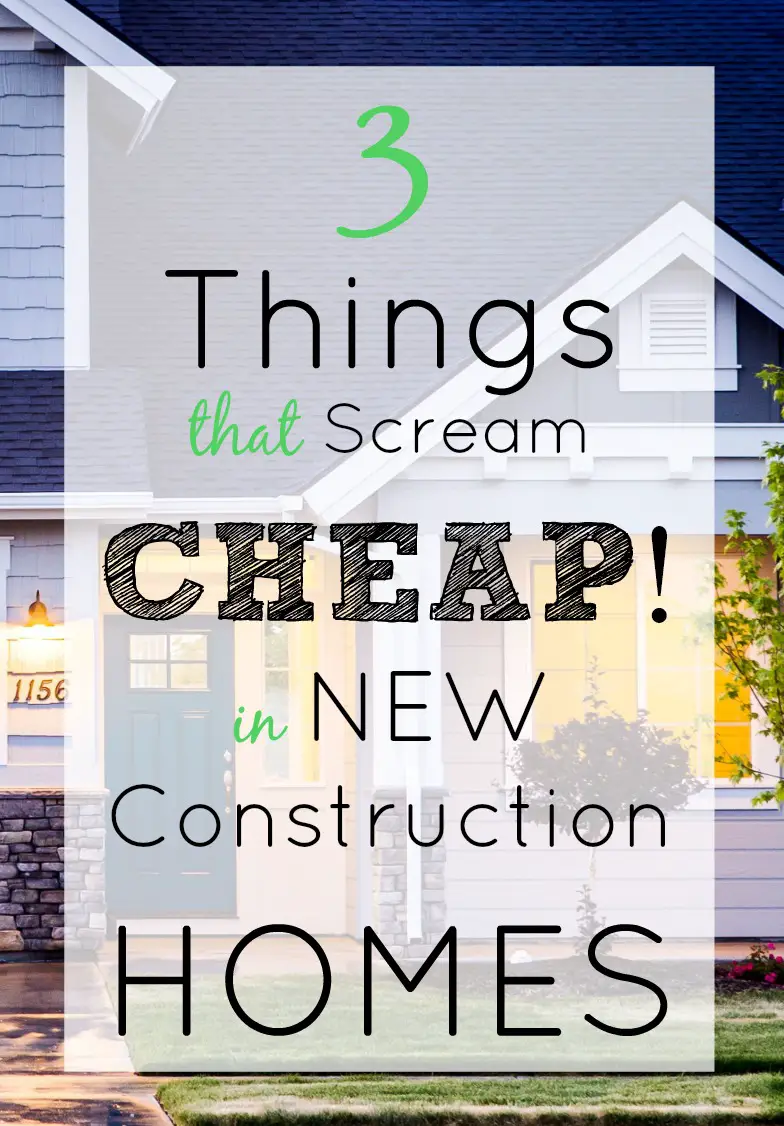A few months ago, my husband and I spent a Sunday looking at new construction homes in a neighboring town. We were unsure where our oldest son would be attending high school in the fall and were exploring all of our options. The area of the country that I live in has some of the highest housing prices in the country – Massachusetts is consistently ranked in the top five of most expensive states to live in according to the Council for Community and Economic Research’s Cost of Living Index. We live outside of Boston but still within commuting distance (if you consider 30+ miles commutable) and the towns we were interested in had strong school districts, so we knew our housing dollar wasn’t going to go too far. But even I was surprised at just how little nearly $1M gets you these days.
We attended two new construction homes’ open houses (we had planned to look at three, but bailed after the first two were so disappointing) from two different builders, in two locations that were similar in terms of attractiveness. And they weren’t that attractive. Neither home was in a neighborhood and one was on a main thoroughfare very near an intersection with (gasp!) traffic lights. The two houses were about the same size (3100 – 3200 square feet) and both had similar sized 1 acre lots that were less than spectacular. One house was listed at $949,000 and the other (on the main road) was listed for $849,900. With those price tags, I had high hopes that the interior space was going to be an upgrade from my present digs. Boy was I disappointed. But there were three things that stood out to me that made the houses feel basic and cheap:
- Builder-grade cabinetry: This is perhaps my biggest pet peeve. Everyone knows that to sell a house – whether new or resale – the kitchens and bathrooms have to wow. The majority of buyers want a big white kitchen with stone/quartz countertops and stainless steel appliances. And while at first glance these houses did have all three, they were the cheapest versions money can buy. The appliances were inexpensive slide in numbers – range/oven combo with a microwave above and in one the refrigerator wasn’t included at all. I was expecting quartz countertops throughout and was disappointed to find one of the cheapest granites you can buy in the kitchens. But to me, the biggest offense was that the kitchen was filled with stock, builder-grade cabinetry. At this price point, I was aghast that the cabinets weren’t ceiling height and they were all stock sizes that didn’t fill out the kitchen fully. While the doors did have shaker panels, they were partial overlay when I would have expected at least full overlay or ideally inset doors. (Don’t know what I’m talking about? Read about choosing kitchen cabinetry here.) After seeing this in the main space where you expect a builder to spend money, I knew I was going to be disappointed with the rest of the house, and I was right.
- Drop-in acrylic shower/tub combos: After eyeballing the kitchen, I moved right to the bathrooms – the second space where buyers want some pizzazz. Again, I was baffled to find no tile work on the walls. Instead, I was met with a tub/shower combo created with a white acrylic insert. It felt like the bathroom in the budget-friendly, family hotel with “Inn” in its name that I stayed with last summer with my husband and three kids. Perfectly functional, but not what you would hope for in your dream home.
- Hollow core molded doors: Almost no one pays attention to the doors in a house. I notice them because I worked at a company that supplies them to builders, so I understand the different manufacturing methods and types of doors you can buy along with all of their pros and cons. So, I know that hollow core molded doors are just about the cheapest door a builder can choose to put in a house. It’s something I’d expect to see in a starter home or maybe just used for closets to save money, but not in a house nearing the $1M mark.What does it matter you say? Well, consider this: doors are in virtually every room of your house and one is almost always in a view no matter where you are. Given their ubiquity, the style of door contributes a lot to the overall feel and aesthetic of the home in my mind. Molded doors are made up of “skins” that are stamped to look like a door would look if you actually built one with stiles, rails and panels. They’ve come a long way over the years, but they are never going to look architecturally correct.
Aesthetics aside, doors have a function – to partition spaces and provide privacy (both visually and audibly). The latter is where the hollow core door fails miserably. A hollow core molded door is constructed from a wood frame with molded skins attached to each side and it is filled with nothing; as in hollow. They put some cardboard pieces in here and there to try to add to the stability of the door, but that’s it. Yes, I said cardboard. (Don’t believe me? Grab a hollow core at your local big box and slice it open.) So if you want to have private conversations, or not hear your teenager’s music two floors down, hollow core doors may not be for you. Finally, hollow core doors are the easiest to damage. I recall a certain epic fight in my childhood home between my older brother and sister. The former was threatening to read a note my sister had written aloud for all to hear. They chased each other through the house and up the stairs where my brother locked himself in his bedroom and began his recitation. My sister, in a vain attempt to get the door open, put her foot through the hollow core door. Enough said. If you want to learn how to choose interior doors check out this post here!
I returned back to my house after this day jaunt with a fresh eye and a new perspective for all of the positives of my existing home accompanied with a sort of rage over the fleecing of homeowners I see happening. So my advice to you, prospective home buyers, is to not accept this level of finish in new construction homes or any house that exceeds the median home price in your marketplace. Your dollar should go farther. You deserve more. Look for a builder who puts quality of materials over extra profit and buy his house, even if it is a bit more.
Kristen











